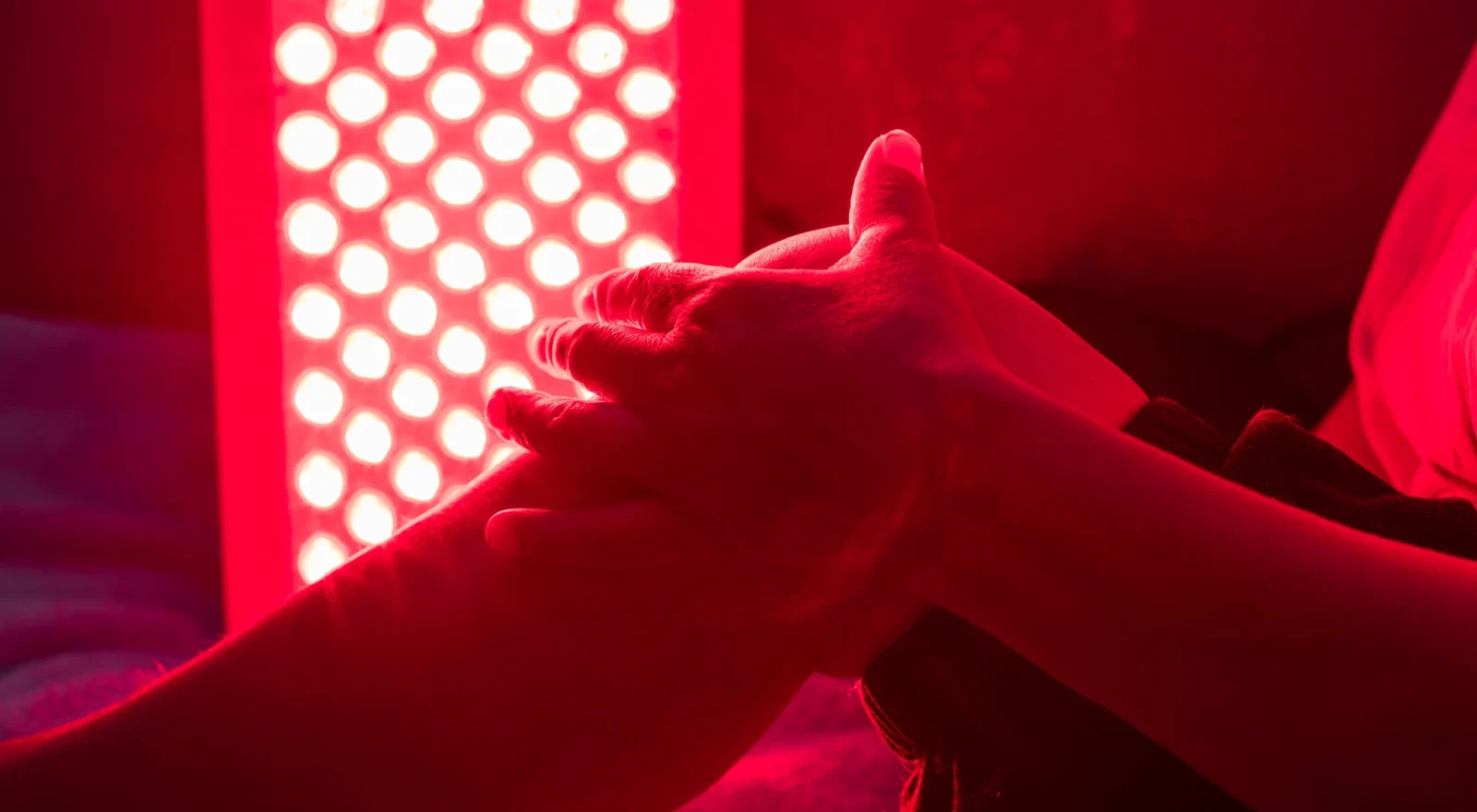Red Light Therapy: Research Illuminates Benefits

Red light therapy is a potential game-changer in managing pain and boosting cognitive function, providing new opportunities for fitness and wellness strategies
Recent research sheds light on the potential benefits of red light therapy, also known as photobiomodulation therapy (PBMT), for managing pain and improving cognitive function. For fitness professionals working with clients who struggle with chronic pain or age-related cognitive decline, these studies offer promising insights into a non-invasive, drug-free treatment option that could complement exercise programs.
As the fitness and wellness industry continues its forward momentum, incorporating evidence-based complementary therapies becomes increasingly important. PBMT represents one such modality that has garnered attention for its potential to enhance client outcomes, which could lead to retention.
By understanding the latest research on red light therapy, fitness professionals can better guide their clients in making informed decisions about their health and wellness journeys. These three studies illuminate the potential applications of PBMT in fitness and wellness settings.
Pain Management for Musculoskeletal Conditions
A comprehensive review published in the European Journal of Physical and Rehabilitation Medicine
highlights the potential of PBMT for managing pain in various musculoskeletal conditions. The authors state, “Low-intensity LASER and LED (PBMT) offers a non-invasive, safe, drug-free and side-effect-free method for pain relief of both acute and chronic musculoskeletal conditions as well as fibromyalgia.”
The review found evidence supporting PBMT’s effectiveness in reducing pain for conditions such as osteoarthritis, fibromyalgia, temporomandibular disorders, neck pain and low back pain. For fitness professionals, this could mean helping clients manage pain without relying on medications, potentially improving exercise tolerance and adherence.
However, the researchers caution that proper dosing is crucial: “PBMT has a biphasic response pattern, i.e., PBMT can be either stimulatory (repair) or inhibitory (pain relief) depending on the delivered dose.” This emphasizes the importance of working with qualified healthcare providers to determine appropriate treatment protocols.

Running Performance and Recovery
Interestingly, a meta-analysis published in the International Journal of Exercise Science found no significant benefits of red light therapy on running performance.
Researchers analyzed 12 studies that used various protocols including different light sources (lasers, LEDs, or combinations), wavelengths (mostly 810-850 nm), and total irradiation doses (ranging from 300 J to 3000 J for both lower limbs). Common treatment sites included the quadriceps, hamstrings and gastrocnemius muscles, with PBM typically applied immediately before or up to 20 minutes before running trials.
Despite the variety of protocols, the meta-analysis concluded, “Our findings indicate that PBM alone or combined with a training program does not improve running performance in terms of time-trial and time-to-exhaustion testing.” However, the researchers noted important limitations, stating, “More studies involving PBM plus training and doses higher than 1000 J are needed to determine if PBM is effective in improving running performance.”
For coaches working with runners, these findings suggest that while current evidence doesn’t support PBM for direct performance enhancement, there’s still potential for its use in recovery or pain management. The varied protocols also highlight the importance of considering specific parameters when discussing or recommending red light therapy. Future research, particularly with higher doses and in combination with training programs, may provide more definitive insights into red light therapy’s potential benefits for runners.

Cognitive Function in Older Adults
A randomized controlled trial published in Menopause Review has shed light on the potential benefits of transcranial photobiomodulation therapy (tPBM) for improving cognitive function in older adults with mild cognitive impairment (MCI).
The study involved 42 older women with MCI, randomly assigned to receive either real tPBM or a sham treatment. Using a specific protocol with 850 nm wavelength LED therapy applied to the right frontal-pole of the cortex over five sessions, the researchers aimed to assess the impact on cognitive function and attentional performance.
The results were encouraging, with the tPBM group showing significant improvements in several key areas. The mini-mental state examination (MMSE) scores increased, indicating enhanced overall cognitive function. Additionally, performance on the Go/No-Go task improved, with participants demonstrating faster reaction times, higher accuracy, and better overall efficiency. These findings led the authors to conclude that “tPBM had a positive effect on older people’s attention and cognitive abilities,” suggesting a promising avenue for supporting cognitive health in aging populations.
For personal trainers working with older clients, these results open up intriguing possibilities. The potential cognitive benefits of tPBM could complement exercise programs aimed at maintaining mental acuity and overall well-being in older adults.
Improved attention and cognitive function could lead to better engagement in physical activities, potentially enhancing the effectiveness of fitness routines. However, it’s important to note that this was a small study focused on a specific population. While the findings are promising, more research is needed to confirm these benefits across diverse groups and to establish optimal treatment protocols. View tPBM as a potential complementary therapy to be considered alongside, not as a replacement for, evidence-based exercise programs for cognitive health.
See also: Halotherapy Redefines Recovery With Salt & Red Light Combo
What are the Implications?
These studies collectively highlight the potential of red light therapy as a versatile tool that could indirectly support clients’ fitness and wellness goals. While it may or may not directly enhance athletic performance, its benefits in pain management and cognitive health could contribute to overall wellness and exercise capacity.
When discussing PBMT with clients, emphasize its potential as a non-invasive, drug-free pain management option for musculoskeletal conditions and explain the importance of proper dosing and application for optimal results. Highlight its potential cognitive benefits for older adult members, which could support overall wellness and exercise engagement. Encourage clients to maintain open communication with their healthcare providers about integrating red light therapy into their wellness routines.
By staying informed about the latest research and maintaining clear professional boundaries, personal trainers and wellness coaches can guide their clients in exploring safe, effective options for managing pain, improving cognitive function and enhancing overall health, thus supporting a truly holistic, collaborative approach.



